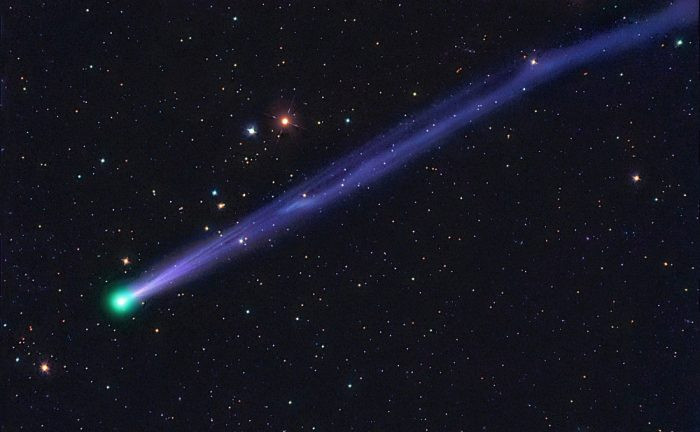Comets create brilliant fireworks in New Year's Eve sky
A comet will fly across Earth on December 31, lighting up the night sky with brilliant natural fireworks as the world welcomes the new year.

Comet 45P / Honda-Mrkos-Pajduáková will be as bright as fireworks in the sky on Earth's Eve.(Photo: NASA).
Comets named 45P / Honda-Mrkos-Pajdušáková will fly right next to the crescent moon on the night of December 31 and can be observed with binoculars, Good Magazine reported. Every five years, this comet flies over the rim of the solar system and has brilliant blue and green heads. It began to become clear on the western horizon from December 15.
"On New Year's Eve, comets and crescent moons will appear parallel to say goodbye to 2016," the US Aerospace Agency (NASA) said.
December also highlighted many important astronomical events such as the meteor shower Ursid and Geminid with the big super moon.
- Let's see the structure of each firework
- Brilliant jellyfish species like fireworks at 1,200m deep in the sea
- Decode 'secret' fireworks colors
- Revealing the first fireworks photo in the universe
- The birth history of fireworks
- Performing fireworks in the Helix Nebula
- The incalculable harm of fireworks
- Stars explode like fireworks
- Twin comets fly closest to Earth within 250 years
- Expect the most brilliant meteor shower of the year
- Making fireworks
- Why is the fireworks so gorgeous?
 Van Allen's belt and evidence that the Apollo 11 mission to the Moon was myth
Van Allen's belt and evidence that the Apollo 11 mission to the Moon was myth The levels of civilization in the universe (Kardashev scale)
The levels of civilization in the universe (Kardashev scale) Today Mars, the sun and the Earth are aligned
Today Mars, the sun and the Earth are aligned The Amazon owner announced a secret plan to build a space base for thousands of people
The Amazon owner announced a secret plan to build a space base for thousands of people